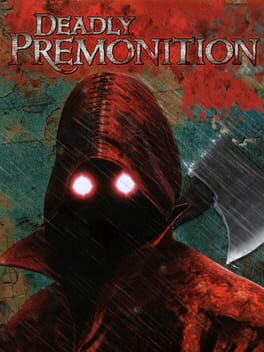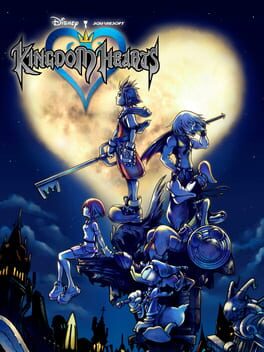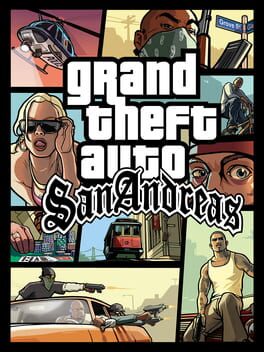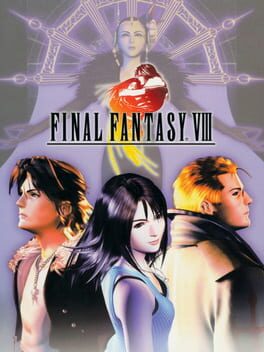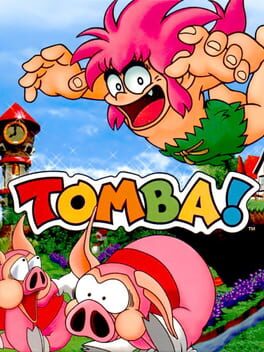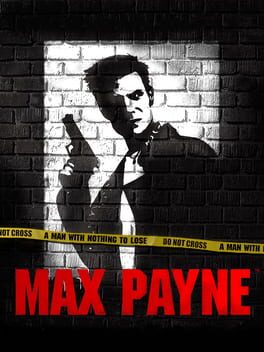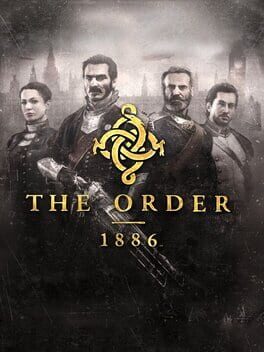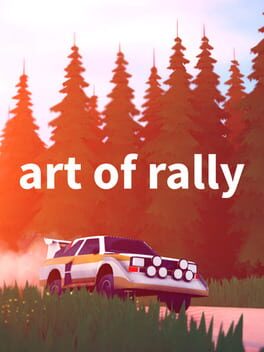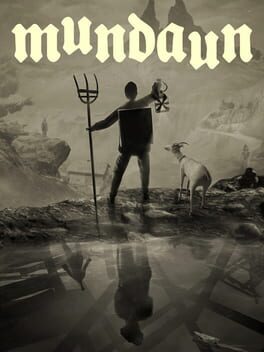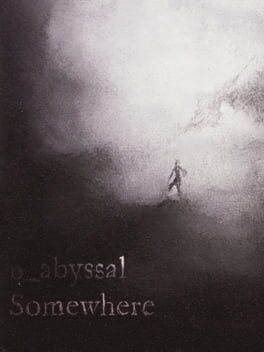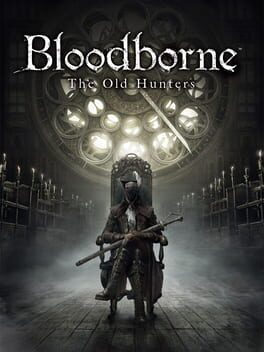Bio
Bad at games but love them deeply. Interested in feelings and belonging.
https://rateyourmusic.com/~nostalghia
https://letterboxd.com/sisterlisa666/
https://glitchwave.com/user/nostalghia/
Bad at games but love them deeply. Interested in feelings and belonging.
https://rateyourmusic.com/~nostalghia
https://letterboxd.com/sisterlisa666/
https://glitchwave.com/user/nostalghia/
Badges

Famous
Gained 100+ followers

2 Years of Service
Being part of the Backloggd community for 2 years

Adored
Gained 300+ total review likes

Donor
Liked 50+ reviews / lists

Best Friends
Become mutual friends with at least 3 others

Trend Setter
Gained 50+ followers

Loved
Gained 100+ total review likes

Well Written
Gained 10+ likes on a single review

Popular
Gained 15+ followers

Gamer
Played 250+ games

Liked
Gained 10+ total review likes

Noticed
Gained 3+ followers

N00b
Played 100+ games
Favorite Games
404
Total Games Played
007
Played in 2024
009
Games Backloggd
Recently Played See More
Recently Reviewed See More
Mundaun’s first-person horror threats are recurring, and increase in number as the game progresses, and yet it retains the feeling of a walking sim. I mean this in the positive sense of environmental specificity, of wandering a landscape saturated in a history that precedes us, and which reveals itself in small, partial ways as we traverse it. I also mean it in the sense of an environmental intimacy. There is a second-hand nostalgia given to us by our virtual body (Curdin), who is prone to personal reminiscences as we uncover Mundaun’s mysteries together in real-time. This is to say the game conditions us to experience its landscape as both alien and profoundly intimate, and it is the intimacy that is most charged with folk-horrific dread. For the player who frequently feels as though there is a strange force watching them from within the world of the walking sim, Mundaun’s dread is most welcoming.
By capturing us in reminiscence and providing us with real-time tangible threats, Mundaun makes pronounced the strange negotiations of gamic tense. When I feel as though this is a walking sim, I consider my efforts oriented to the recovery of some past hidden in the landscape; when I feel as though it is survival horror I am attuned to the anxiety of the instant. This is not in itself novel — any game with attention to its world balances the time before us (past) with the time of action (now) — but Mundaun amplifies this tension through the strength of its environmental intimacy and the beckoning of its reminiscence within the horror format. That is its narrative, like its enemies, unfolds in real-time. Curdin has returned to his grandfather’s village for his funeral, and this return precipitates the series of events that is Mundaun. We talk to its inhabitants, run errands, solve puzzles, our actions all assisting in the progression of a narrative that has not yet occurred. And yet because of the game’s mood, the narrative still to come seems always already lost in the past. Who are these people? Are they still alive? Who attends Jeremias’ (the priest’s) sermons? H.R., the talking corpse in the snow? Walther, deep in his forgotten wartime bunker? The spectral Flurina? Playing Mundaun is wandering a buried village, its inhabitants trapped and reenacting the ghost story that binds them to this beautiful, tragic mountain village. In the end they asked me to return, but in the light of day I saw it for what it was. It’s over, I thought, forever now.
In terms of how it plays with or without this doomed mood, Mundaun’s enemies are consistent with its local geography, staggering through the hills. The hay creatures are frightening because they look like the haystacks we keep passing, and because their idiot-physicality gives them a sense of random, thoughtless weight more dreadful than a human-like intelligence. The beekeepers on the other hand hover — something I didn’t realise until I got too close, and which promptly brought to mind the haunting image of the Blair Witch “whose feet never touched the ground”. Both in their own way make our adoptive body in Curdin feel particularly leaden, and ill-equipped to respond to the world and its demands. He becomes the little boy, gazing terrified out the window of his grandfather’s house, believing all at once his superstitions. Mundaun’s puzzles carve a linear path through the world, providing us tasks to advance the day so that narrative time can proceed. Most impressive is the way that, as the story comes together and its emotions are made to resonate, the developers maintain the same patience that welcomed us in. It becomes ‘big’ but it is never loud, scripted sequences takes over but it still pretends it’s off-kilter, about to fall apart. It’s so good that it never wants you to know quite how good it is.
There's something to be said that I can't quite figure out yet about the way we are 'cursed' on arrival. It is only when the Old Man grabs us, deforming our arm, that Mundaun opens itself to us. I've tried to put into words elsewhere how a similar maiming of the arm takes place in Resident Evil 7 — we are 'welcome(d) to the family' only after our arm is cut off and reattached, making us kin to the Baker family. Despite their significant differences (both as texts and in their treatment of the arm), Mundaun is similarly interested in the notion of homecoming as a kind of physical maiming. The simple pathos of this sets in when, departing on the bus, our business concluded in our grandfather's ghost village, we look down to see our arm still deformed. Perhaps this is the cost of 'being there' in the world of the game, our physical bodies conjoined with Curdin's, Curdin's with Mundaun. Or perhaps more generally it's the cost of reminiscence, memory being the wound that cannot heal.
By capturing us in reminiscence and providing us with real-time tangible threats, Mundaun makes pronounced the strange negotiations of gamic tense. When I feel as though this is a walking sim, I consider my efforts oriented to the recovery of some past hidden in the landscape; when I feel as though it is survival horror I am attuned to the anxiety of the instant. This is not in itself novel — any game with attention to its world balances the time before us (past) with the time of action (now) — but Mundaun amplifies this tension through the strength of its environmental intimacy and the beckoning of its reminiscence within the horror format. That is its narrative, like its enemies, unfolds in real-time. Curdin has returned to his grandfather’s village for his funeral, and this return precipitates the series of events that is Mundaun. We talk to its inhabitants, run errands, solve puzzles, our actions all assisting in the progression of a narrative that has not yet occurred. And yet because of the game’s mood, the narrative still to come seems always already lost in the past. Who are these people? Are they still alive? Who attends Jeremias’ (the priest’s) sermons? H.R., the talking corpse in the snow? Walther, deep in his forgotten wartime bunker? The spectral Flurina? Playing Mundaun is wandering a buried village, its inhabitants trapped and reenacting the ghost story that binds them to this beautiful, tragic mountain village. In the end they asked me to return, but in the light of day I saw it for what it was. It’s over, I thought, forever now.
In terms of how it plays with or without this doomed mood, Mundaun’s enemies are consistent with its local geography, staggering through the hills. The hay creatures are frightening because they look like the haystacks we keep passing, and because their idiot-physicality gives them a sense of random, thoughtless weight more dreadful than a human-like intelligence. The beekeepers on the other hand hover — something I didn’t realise until I got too close, and which promptly brought to mind the haunting image of the Blair Witch “whose feet never touched the ground”. Both in their own way make our adoptive body in Curdin feel particularly leaden, and ill-equipped to respond to the world and its demands. He becomes the little boy, gazing terrified out the window of his grandfather’s house, believing all at once his superstitions. Mundaun’s puzzles carve a linear path through the world, providing us tasks to advance the day so that narrative time can proceed. Most impressive is the way that, as the story comes together and its emotions are made to resonate, the developers maintain the same patience that welcomed us in. It becomes ‘big’ but it is never loud, scripted sequences takes over but it still pretends it’s off-kilter, about to fall apart. It’s so good that it never wants you to know quite how good it is.
There's something to be said that I can't quite figure out yet about the way we are 'cursed' on arrival. It is only when the Old Man grabs us, deforming our arm, that Mundaun opens itself to us. I've tried to put into words elsewhere how a similar maiming of the arm takes place in Resident Evil 7 — we are 'welcome(d) to the family' only after our arm is cut off and reattached, making us kin to the Baker family. Despite their significant differences (both as texts and in their treatment of the arm), Mundaun is similarly interested in the notion of homecoming as a kind of physical maiming. The simple pathos of this sets in when, departing on the bus, our business concluded in our grandfather's ghost village, we look down to see our arm still deformed. Perhaps this is the cost of 'being there' in the world of the game, our physical bodies conjoined with Curdin's, Curdin's with Mundaun. Or perhaps more generally it's the cost of reminiscence, memory being the wound that cannot heal.
In Alfie Bown's excellent The PlayStation Dreamworld (2017) the author considers whether a videogame can truly be unheimlich. On one hand there is something unsettling about the malfunctioning technology of yesteryear. But then on the other, Bown notes, we have a way of smoothing over the gnarled edges of the past by designating things 'retro'. Maybe we can see this with the trend toward a self-consciously broken 'retro' style in videogames. For something to be unheimlich it has to reveal something about ourselves — perhaps if we call these things uncanny it's because they reveal hauntology's undesirable proximity to cheap nostalgia. 0_abyssalSomewhere doesn't have any answers, but it benefits by making a dual address to both the style and materiality of the past. What I mean is it pairs the ghostly trace with corroded industrial debris because in practical terms the two are the same thing. It comes from a future where we are dead but our technologies have survived, or, rather, have been programmed to await a human 'input' that will never arrive.
How were we able to drink up the sea? Who gave us the sponge to wipe away the entire horizon? What were we doing when we unchained this earth from its sun? Where is it moving to now? Where are we moving to? Away from all suns? Are we not continually falling? And backwards, sidewards, forwards, in all directions? Is there still an up and a down? Aren't we straying as though through an infinite nothing? Isn't empty space breathing at us? Hasn't it got colder? Isn't night and more night coming again and again? Don't lanterns have to be lit in the morning? Do we still hear nothing of the noise of the grave-diggers who are burying God? Do we still smell nothing of the divine decomposition? — Gods, too, decompose! (§125)

